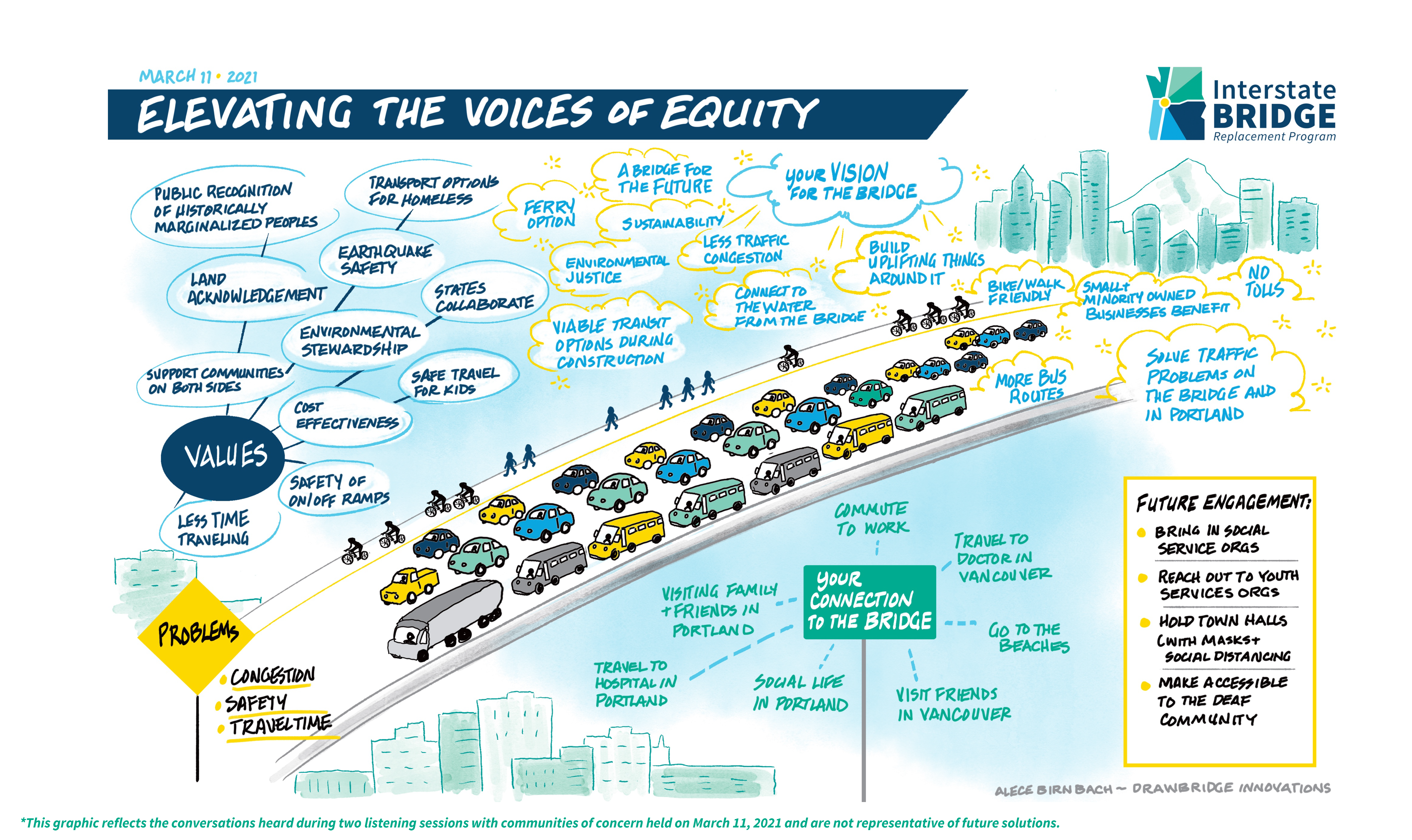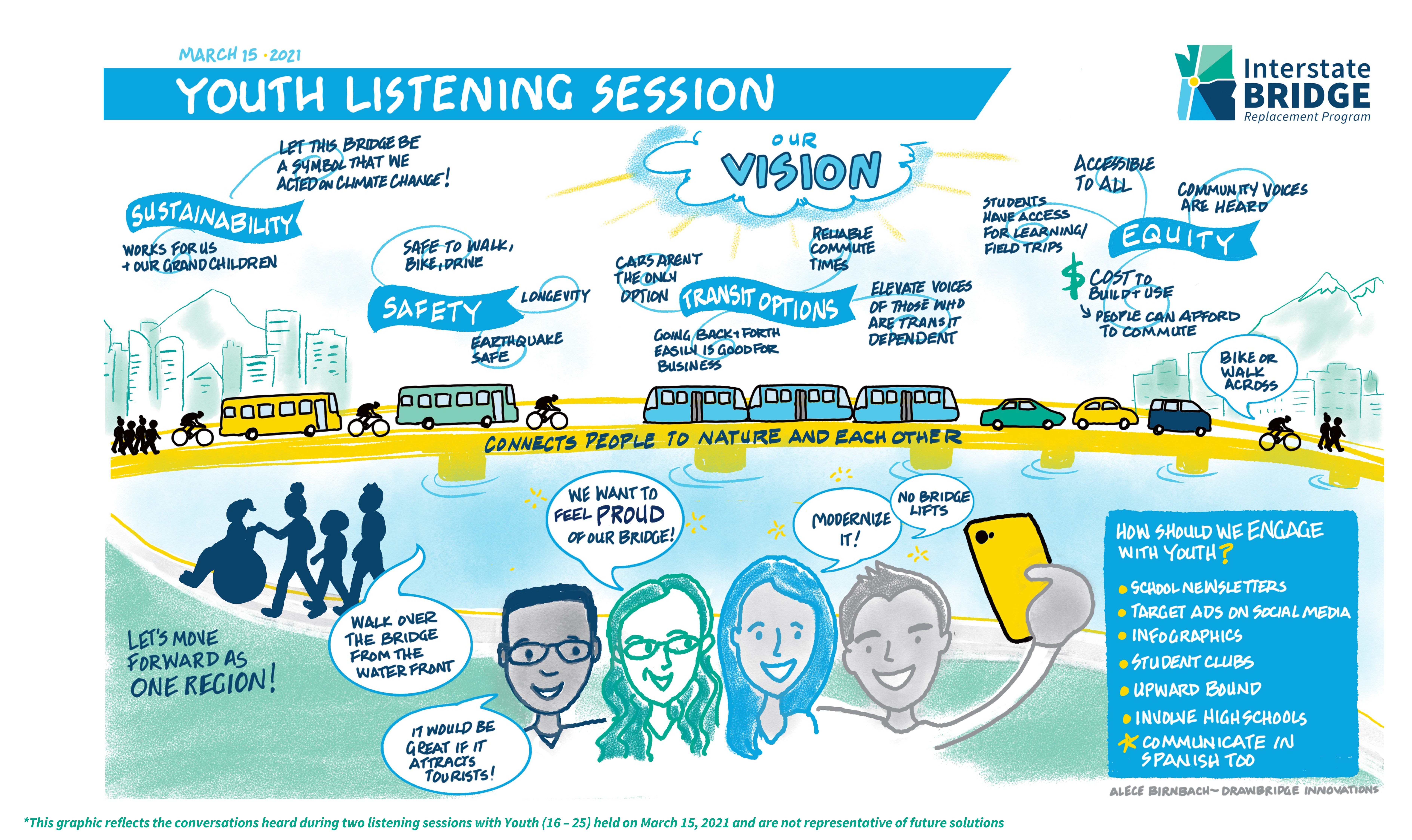Climate Considerations
Considering our climate is central to the planning process.
As one of the largest transportation projects on the west coast in a time of climate crisis, climate considerations will be integrated into the program through design, construction, operations and plans for long-term maintenance activities.
The IBR program supports local, regional, and state climate goals—including the reduction of greenhouse gas emissions— by identifying safe, efficient and accessible multimodal solutions for people traveling across the Interstate Bridge.

How does transportation impact climate?
Transportation is a major contributor to greenhouse gas emissions globally. Our transportation infrastructure — encompassing roadway design, transit facilities, and local street networks — influences travel patterns, vehicle miles traveled and greenhouse gas emissions.
Curbing the effects of the climate crisis requires a collective effort to reduce dependence on fossil fuels, develop walkable communities, and provide local access to jobs, affordable housing and essential services.
How will the IBR program contribute to addressing climate impacts?
The construction of a new bridge and investments along the five-mile program corridor brings the opportunity to address the region’s climate impacts by improving the way the corridor is built, used and maintained.
Some compliance efforts that the IBR program must address include:
Transportation Options
One of the best ways the IBR program can support reduced emissions from transportation long-term is to shift demand away from single occupancy vehicles (SOV), like cars, to high occupancy vehicles (HOV), like carpools, vanpools, buses and light rail trains. When more people can move in fewer vehicles, congestion is reduced.
This could look like:
- Increasing options for safe, reliable and accessible public transit.
- Increasing and improving safety and accessibility for people to walk, bike and roll across the bridge.
- Designing infrastructure to accommodate public transit vehicles like buses and light rail trains.
Thoughtful Design Choices
The IBR program has an opportunity to influence regional transportation design by making climate resilient design choices in the program’s five-mile corridor. Climate models predict the type and frequency of extreme weather events - the program’s construction can reflect this knowledge in the face of the climate crisis. Current design efforts are focusing on improving resiliency as the program continues to work with partners to make well-informed decisions that will benefit the region for years to come.
This could look like:
- Making material and design choices for road surfaces, transit stations, sidewalks and bike paths to account for increased temperature extremes.
- Designing stormwater management systems to account for increased storm intensities.
- Evaluate the bridge height and clearances to consider changes in river elevations from changed winter and summer flows and the potential for sea level rise.
- Using native and other resilient species to ensure plant survival and resiliency.
- Incorporating renewable energy–harnessing technology such as solar panels or wind turbines to support the local electricity grid and offset emissions directly from bridge operations.
Construction
Construction methods can be harmful to the surrounding environment, affecting air quality, increasing noise and generating material waste. The IBR program is focused on implementing the best and most climate friendly construction materials, equipment and practices. This means we’ll reduce embedded carbon in materials, maximize recycling and reduce greenhouse gas emissions from planned construction activities. Guidance on these matters will be established during the environmental review process and can be incorporated through specifications in construction contracts.
This could look like:
- Establishing a recycling plan to maximize the recycling or reuse of old bridge components, like concrete and asphalt pavements.
- Use low-carbon fuels in construction equipment when feasible.
- Exploring clean production methods for cement and concrete, and the use of low-carbon fuels in construction equipment when feasible.
- Seeking to use battery powered equipment.
Operations and Maintenance
Investments within the program area, like any transportation project, will result in environmental impacts from the wear and tear of materials, energy used, lighting, electric vehicle charging stations and more. As infrastructure design choices are made in the coming years, the operation and maintenance needs can be met in climate-considerate ways.
Community Listening Sessions
Gathering feedback from the community is a foundational part of the IBR program. Through neighborhood forums, community listening sessions, and local events, we are elevating community voices throughout the planning process. Check out illustrations below showcasing community feedback specifically around climate considerations.
We need your help.
Join us in our effort to replace the Interstate Bridge. Your feedback is important in shaping a solution.



